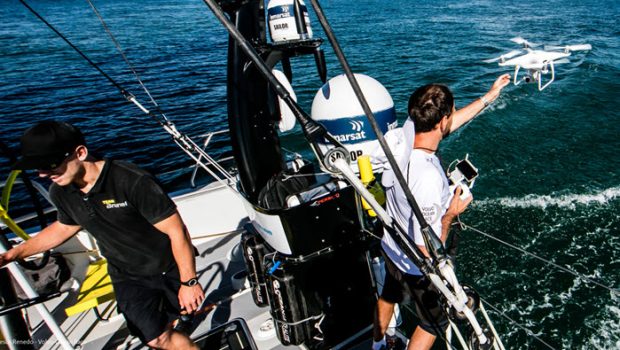Drone Liability: What You Need to Know
Published on May 8th, 2018
Drone uptake is growing at a steep trajectory across all segments and user groups, and sailors and the sailing industry are taking notice. However, before joining in the fun, one should take the time to understand the related FAA regulations, industry requirements, insurance needs, and safety best practices. Let’s start with some drone basics:
• Drone Operating Rules. The FAA provides rules and safety tips for drone operation which apply to both commercial and recreational drone usage. These rules include drone operation guidelines such as needing to keep the drone in sight at all times and never flying over people. Read the full set of rules on the FAA website.
• Drone Registration. As of December 2017, there has been a law in place requiring all small unmanned aircraft (including drones) weighing more than 0.55 of a pound and less than 55 pounds to be registered with the FAA and marked with a registration number. Learn more on the FAADroneZone website.
• Flying for “fun” or for “commercial” purposes. The line between recreational and commercial usage can quickly become blurred. However, nearly all examples of sailing organizations and sailing coaches using drones fall under the FAA’s Commercial usage definition and require the drone operator to be a licensed FAA Remote Pilot in Command.
– Commercial use of a drone is defined by the FAA as: “Flying for work, business, non-recreational reasons, or commercial gain.” This typically includes flying a drone for hire, compensation, to provide a service, or for economic benefit of an entity or person. Intended use, not compensation, is typically the determining factor.
– Recreational or hobby use of a drone is defined by the FAA as: “Flying for enjoyment and not for work, business purposes, or for compensation or hire.”
• Drone Pilot Licensing Requirements. If a drone is being flown commercially (for work, business, commercial gain, or non-recreational reasons), the pilot must obtain a Remote Pilot Certificate. Learn more about UAS (Part 107) licensing.
• Insurance Requirements. It is smart risk management to purchase insurance coverage, whether flying for fun or commercially, because drones are often excluded from liability policies. Flying a drone without coverage can expose you, your assets, and your organization to significant lawsuits and claims for bodily injury or property damage.
For example, Gowrie Group Insurance offer two types of drone insurance for sailors and sailing organizations which can be purchased online: On-Demand Insurance which is sold by the hour through Gowrie’s partner, Verifly, and purchased using an App; and standard Annual Policies which can be purchased through Gowrie’s Online Drone Insurance Portal.
To learn more about drone usage in the sailing industry, read the full Gowrie Group Drone Risk Report or visit www.gowrie.com/droneinsurance.
Source: Gowrie Group









 We’ll keep your information safe.
We’ll keep your information safe.